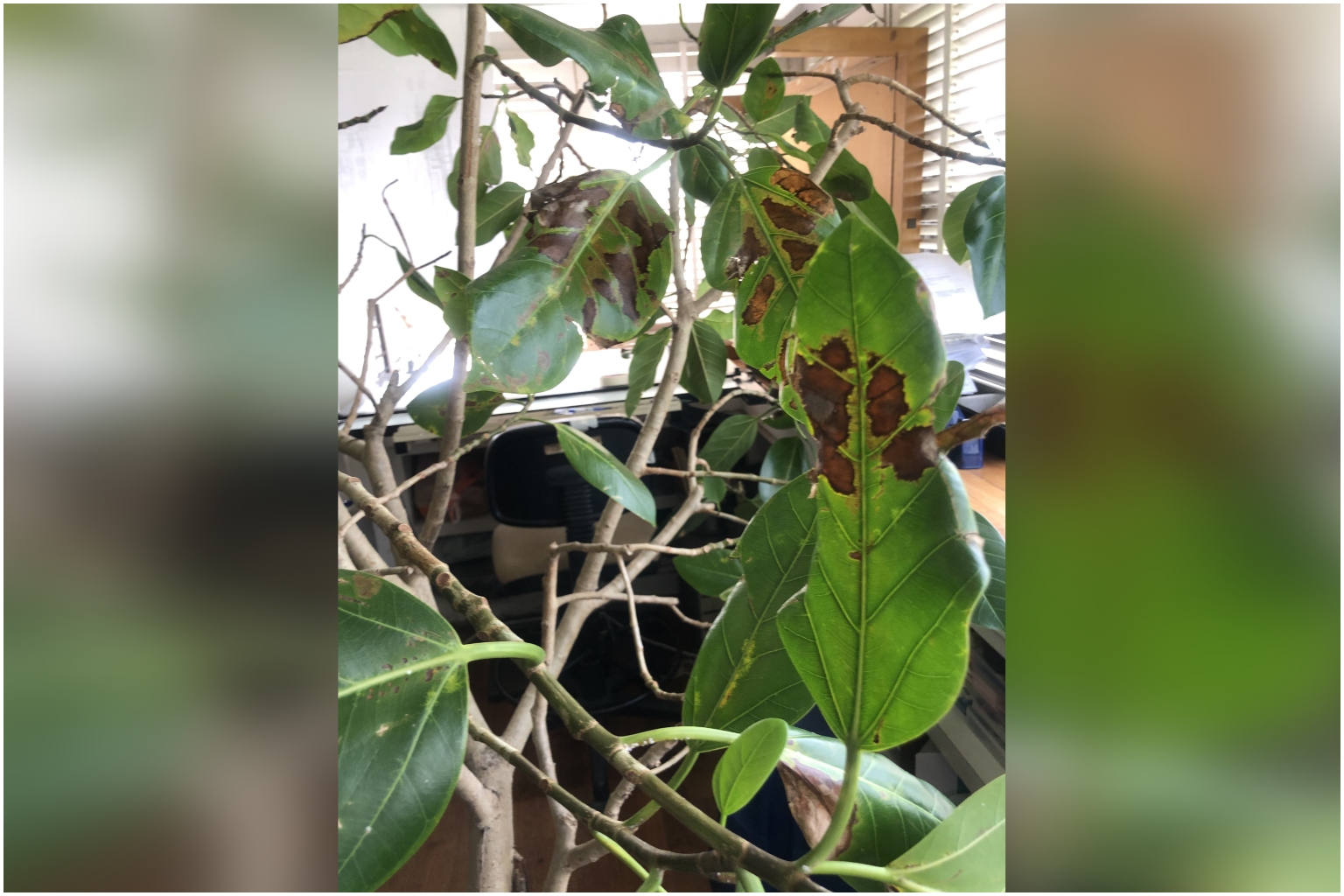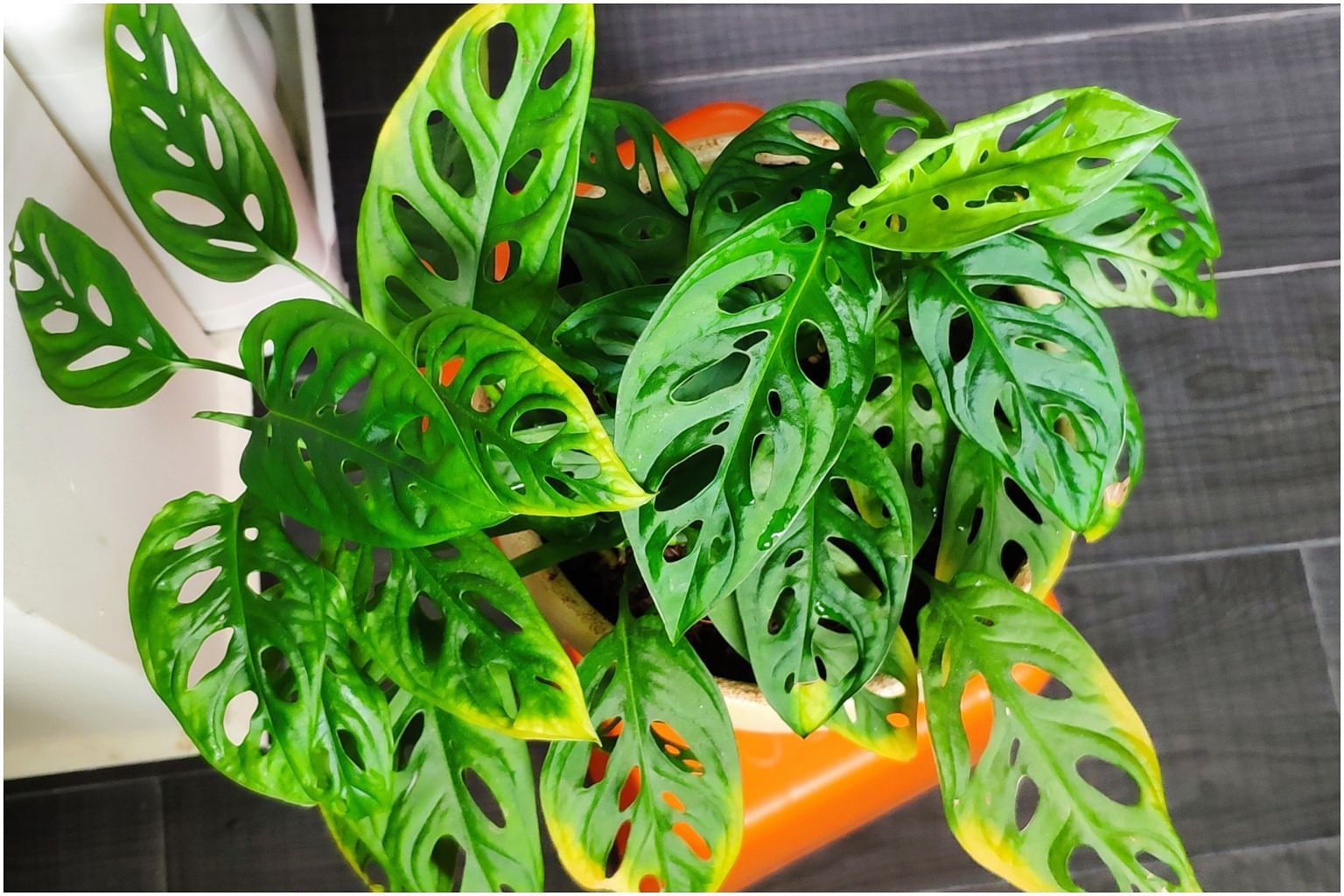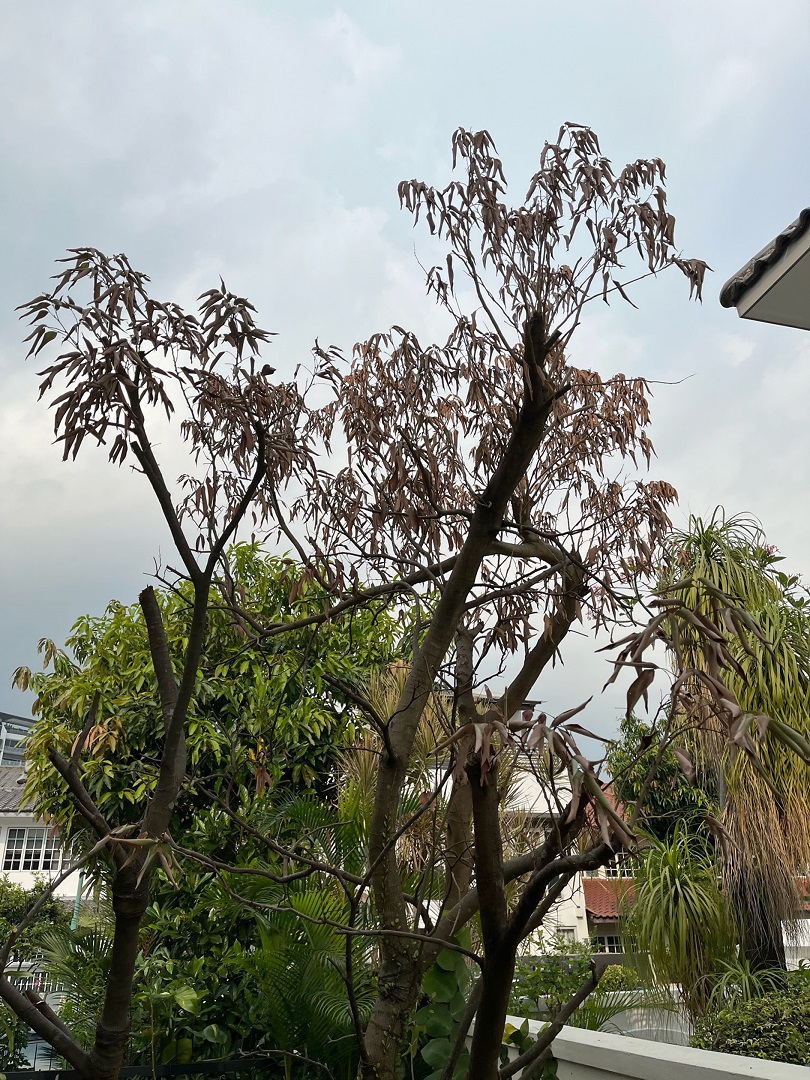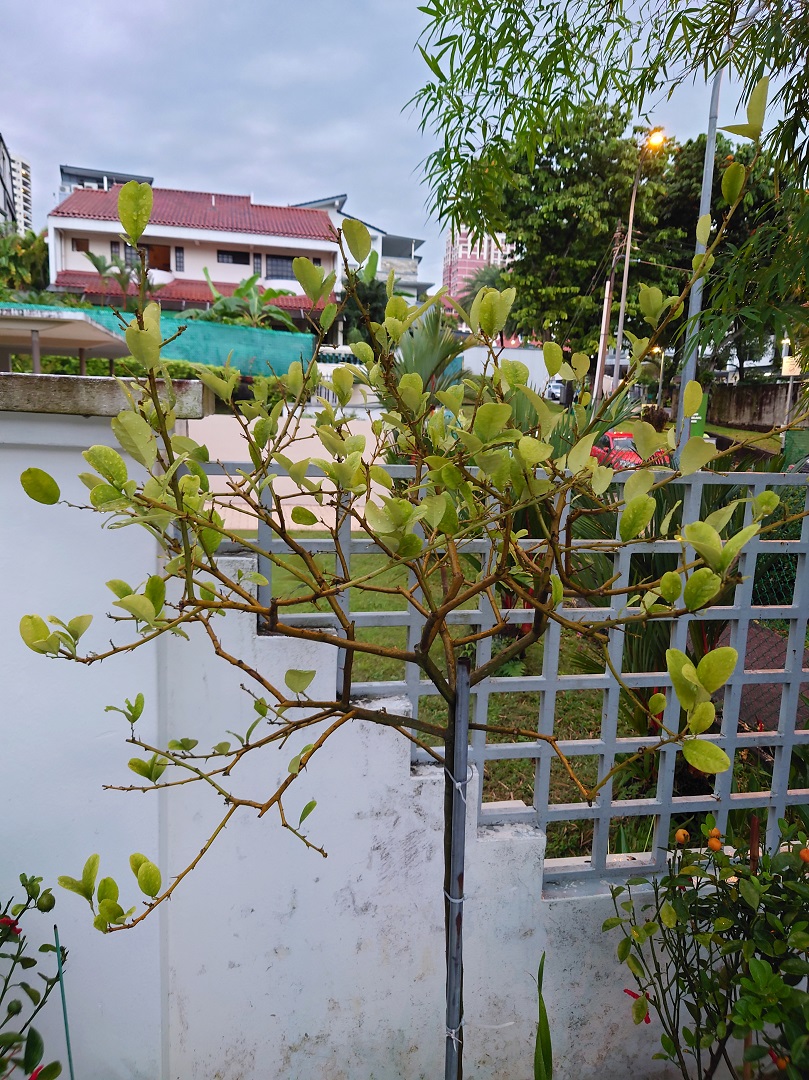Root Awakening: Ficus tree needs direct sunlight to thrive
Sign up now: Get ST's newsletters delivered to your inbox

Ficus trees generally need at least six hours of direct sunlight a day to do well in an apartment setting.
PHOTO: CHENG LIANG GEK
Follow topic:
Ficus tree needs direct sunlight to thrive
What is this plant? I bought it a year ago and it thrived for about nine months before the leaves started breaking and browning. It had furry white mould on the backs of leaf stalks, as well as white spots on the leaf surfaces.
I used a toothbrush and rag to brush off the bugs. I also sprayed the plant with natural pyrethrum and used chlorpyrifos for the potted soil. I added fertiliser every two to three weeks and watered the plant with tap water only when the soil felt dry. However, the plant's condition has not improved for almost five months. What is wrong with it?
I have another tree with yellowish-green variegated leaves and two more Ficus lyrata. All my plants are about 1.8m to 2m tall and suffer from the same issues as the above. They are placed near half-height windows in my flat.
Cheng Liang Gek
The tree appears to be the Ficus benghalensis, commonly known as the Indian Banyan. These trees thrive outdoors, where they get direct sunlight throughout the day. They can be challenging to grow indoors as the light conditions may be inadequate.
Ficus trees generally need at least six hours of direct sunlight a day to do well in an apartment setting. A lack of light will cause them to lose their leaves, suffer from poor health and become more prone to pests and diseases.
Consider growing more shade-tolerant houseplants instead. Ficus trees are difficult to grow indoors under artificial light without large high-intensity set-ups, which sap energy and generate a lot of heat.
The pests may have spread around your plants because indoor environments lack the beneficial biodiversity needed to keep pest populations in check.
For a pesticide-free method to clear pests, take the trees to your bathroom regularly for a thorough wash. The use of systemic pesticide solutions or granules may also help to control the population of sap-sucking insects.
Foliage plant may have wet feet

My Monstera's leaves are turning yellow at the edges, but new leaves are still growing. I spray the leaves and soil with water twice a week. How can I stop the leaves from turning yellow?
Tan Poh Keam
Your plant may have wet feet. Check the growing medium - is it rich in organic matter like coco peat? Such substrates can hold a lot of moisture, and if the plant is growing in a shady area, the moisture will not evaporate fast enough, resulting in wet feet which can prevent the plant from taking up enough nutrients.
Try watering your plant less and letting the root zone dry out slightly before watering again. The frequency of watering will depend on the growing conditions.
Alternatively, try repotting the plant in an aerated mix that contains gritty materials, which will dry out faster.
Tree may have been overpruned or have root issues

My "mata kuching" tree was growing very well but not fruiting, and I pruned it. The leaves recently started to dry out. Is the tree dying?
Kenny Ee
A fruit tree should not be overpruned, as this can bring about its decline. The extent of proper pruning will depend on the health and species of the tree.
Was your tree recently stressed by root disturbance or extremely hot weather? Such conditions can prevent it from taking up water properly or cause it to lose water excessively, thus drying out its new foliage. Waterlogged roots, especially during the rainy season, can kill a plant due to the lack of oxygen.
Check if the existing branches are still pliable and green inside. If they are brittle and dry, the branches are dead.
If the tree is still alive, ensure the conditions of the root zone are optimal. Mulch the base of the tree with good-quality compost and apply growth stimulants like seaweed extract on the root zone and aerial parts of the tree, which may help to reduce stress and aid in its recovery.
Lemon tree's soil may be waterlogged

We bought a lemon tree about a year or more ago and left it in its pot. The leaves started turning yellow, so we replanted it in the ground. However, the problem persisted. What is wrong?
Long Hin Wei
Your tree may have been grown in soil that has compacted over time or become waterlogged. Citrus species in general do not fare well with wet feet, which can happen when soil has compacted over time, leading to poor water drainage. Frequent rain can cause trees to be waterlogged too.
If this is the case, transplant the tree from the ground. Trench the tree to get a good-sized root ball and move it into a growing medium that contains gritty components, like fine expanded clay pellets or pumice, for better draining.
Note that if too small a root ball is taken, or if the root ball breaks, it can lead to transplant failure and reduce the odds of the tree's survival.
The transplanted tree should be placed in a shady location until it recovers and produces new leaves. It can then be gradually moved out to direct sunlight.
If you are unsure how to do this, it may be best to engage a landscaping contractor.
Dracaena needs sunlight, nutrients

What is wrong with my plant? It has been with me for years, but turned yellow in recent weeks.
Adrian Ling
There are several possibilities. From the picture, your Dracaena may lack sunlight. Indoor conditions may not be conducive for its growth.
Also, the plant may lack nutrients if it is standing in just tap water. You may want to add a little water-soluble fertiliser to it. Change the water periodically and ensure there is no rotting plant material in the water, which may rob the plant of oxygen and lead to infection by pathogenic microbes.
Finally, the smoke from burning incense may also affect leaf health. Some air circulation will help your plant.
*Answers by Dr Wilson Wong, an NParks-certified practising horticulturist, parks manager and ISA-certified arborist. He is the founder of Green Culture Singapore and an adjunct assistant professor (Food Science & Technology) at the National University of Singapore.
*Have a gardening query? E-mail it with clear, high-resolution pictures of at least 1MB, if any, and your full name to stlife@sph.com.sg. We reserve the right to edit and reject questions.

